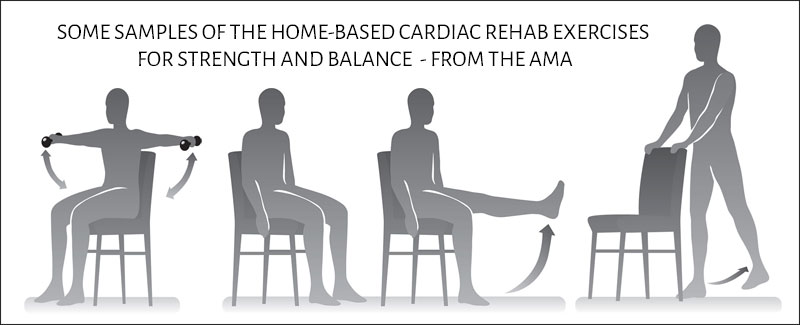Low Aerobic Exercise for Weight Loss Without Pain Or Strain
Low aerobic exercise? What does that mean? Let us explain …
There’s a chance that to lose weight you’re trying workouts that are very hard. In fact, so hard that your knees, back, shoulders, and ankles are under great strain.
It’s a mistaken idea people often have that exercise has to be extremely energetic, vigorous intensive – and painful – to be effective. And that makes people push themselves at an unbearable pace to “burn calories fast” through high-intensity exercise.
But most of us who are not trained athletes can’t keep up such intense workouts, day after day. Also, such“stop-start” exercising is what makes our weight loss and fitness programs unsuccessful.
There is a smarter, less injurious way to exercise – and that’s by doing “low aerobic exercise”. You will be able to do your exercises without strain and pain. And it will all be easy to do as a daily habit.
Your excess weight will fall off by regular working out, without giving up – rather than by trying to push yourself to breakdown levels.
Want to know more about low aerobic exercise? Read on!
Low aerobic exercise: Why should you try it?
We all know that an important part of exercise is aerobic capacity. Aerobic means “with air”. In other words, exercises that make us breathe in deep, and raise the heart rate, help burn those unwanted calories.
Exercise also helps with other ailments like hypertension, obesity, diabetes, or cholesterol – or if you have a family history of heart disease. Remember, the chances of future heart attacks get multiplied when you are unable to control these other diseases as well.
While any exercise works for weight loss and your heart care, it can only do so if the exercise regimen is consistent and can be continued, not just for the short term but as a long term habit. That’s the best way to lose calories and keep them away for good.
Low-impact aerobic fitness exercises are the answer to injury-less, regular, and yet effective weight loss.
Low aerobic exercise is also often called by various other names – such as low intensity exercise, low impact exercise, low intensity cardio, low impact cardio, low impact aerobics, and so on. The idea is the same whatever the name. Do the exercise, but control the harmful overload of strain on your skeletal frame, muscles, and body.
Benefits of low aerobic exercise: why is it good?
Even if your weight loss and ideal fitness level are more gradually achieved, there are huge benefits to low aerobic exercises:
- You can still burn calories at a fairly consistent pace, provided you do low aerobic exercises as long-duration exercises (say half-an-hour to one-hour workouts) and consistently over time.
- Your exercises are less likely to lead to injury or burnout caused by working out at high body-discomfort levels.
- After exercise you will still have enough energy left in your body to continue with your daily work, instead of crashing down on the bed for the rest of the day.
- You are more likely to stick with these pleasant (and non-painful) exercises that you enjoy.
- You will probably burn more calories in the long run with low aerobic exercise because you are more likely to keep at the exercise habit.
- Low aerobic exercises also increase the production of endorphins (happy hormones), which act as natural painkillers – and can improve your mood to relieve symptoms of depression.
- Many low impact exercises also train your body in the key area of balance and poise, along with losing weight. Focusing on your slow movements through exercises like tai chi, yoga, and pilates will improve body alignment and you’ll look less bulky.
- Low-intensity aerobic exercises also calm your nervous system so you’re ready for a great night’s sleep after working out.
What is the ideal low aerobic heart rate zone?

According to the Cleveland Clinic, low-intensity cardio training is when you work out between 50%–60% of your maximum heart rate for a steady 30 minutes or more.
Monitor your heart rate zone with a smartwatch.
At this level of intensity, you can sustain the workout for a longer period of time – and build your endurance and training load progressively.
How do low-intensity aerobic exercises work?
According to the American Council on Exercise (ACE), during lower intensity exercise, your muscles rely on energy production from a combination of oxygen, carbohydrates, and fats. Your body learns to use these energy sources more efficiently, allowing you to work out for longer stretches of time.
Further, according to a paper published in the Strength & Conditioning Journal low-intensity aerobics also helps to strengthen your “slow-twitch” muscle fibers. These slow-twitch muscle fibers are the ones used by your body for sustained, smaller movements and postural control. The use of these muscle fibers allows maximum oxygen uptake during low aerobic exercise.
How do you know if you’re doing low aerobic exercises correctly?

Experts say you should be able to hold a conversation while completing a low-intensity cardio workout. You shouldn’t be gasping and out of breath completely.
Trainers also say that in low aerobic exercises, one foot must stay on the ground at all times. When both legs lift up, you pound back to the ground straining a lot of joints and bones.
How can you “turn up the burn” with low aerobic exercise?
Indeed, you can burn more fat and calories as a part of your low intensity cardio routine. How?
Change up your routine often. The human body quickly adapts to your workout. As it adapts it becomes more efficient, thus burning fewer calories even though you are doing the same workout at the same level of exertion. So, change your mode of exercise every now and then.
How much must you exercise when doing low aerobic workouts?
Typical recommendations for low aerobic exercise include at least a 20-30 minute workout between 3-5 times a week.
People who can increase their low aerobic exercise sessions to 40-60 minutes, 5-6 times a week, report even better results. But you have to very gradually increase the exercising time.
What are some great low aerobic exercises to try?
Finding the right low aerobic exercise routine is typically dependent on your personal preference, and may involve a process of trial and error. Here are some excellent ideas …
1. Low aerobic workout routines (if you like a sequenced regimen)
Here are two popular physical activity routines from YouTube to try …
a. Fun, low impact workout for TOTAL beginners
b.15 Min Low Impact Aerobics – Quiet Cardio Workout for Beginners with No Jumping – Easy Exercises
2. Other home-based low aerobic exercise activity
- Pilates done with a focus on posture perfection
- Yoga asanas accompanied by deep breathing, and mindfulness
- Low impact cardio with light-to-moderate hand weights
- Treadmill walking at a moderate but steady pace
- Stair-climbing with slow step by step pacing
- Gentle rowing aiming for duration and not speed
- Step aerobics done with low stepping platforms
- Ballroom dancing or any other form of gliding dance moves
3. Outdoors-based low aerobic exercise activity
- Walking at a brisk but not overly fast pace
- Cycling with rhythmic pedaling movements
- Tai chi done in a slow, focused manner with deep breathing
- Hiking on low-grade terrain for longer distances
- Rock climbing with usage of controlled muscle strength
- Swimming with graceful arms and legs coordination
- Skating or rollerblading (if you know how to stop when you need to!)
- Golf – a great exercise if you skip the golf-cart rides and walk the course














